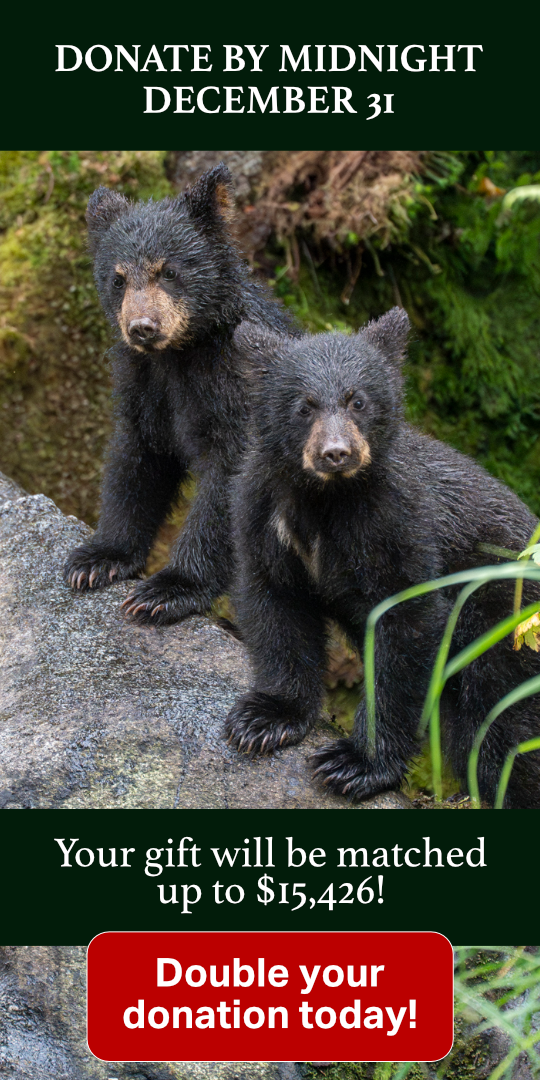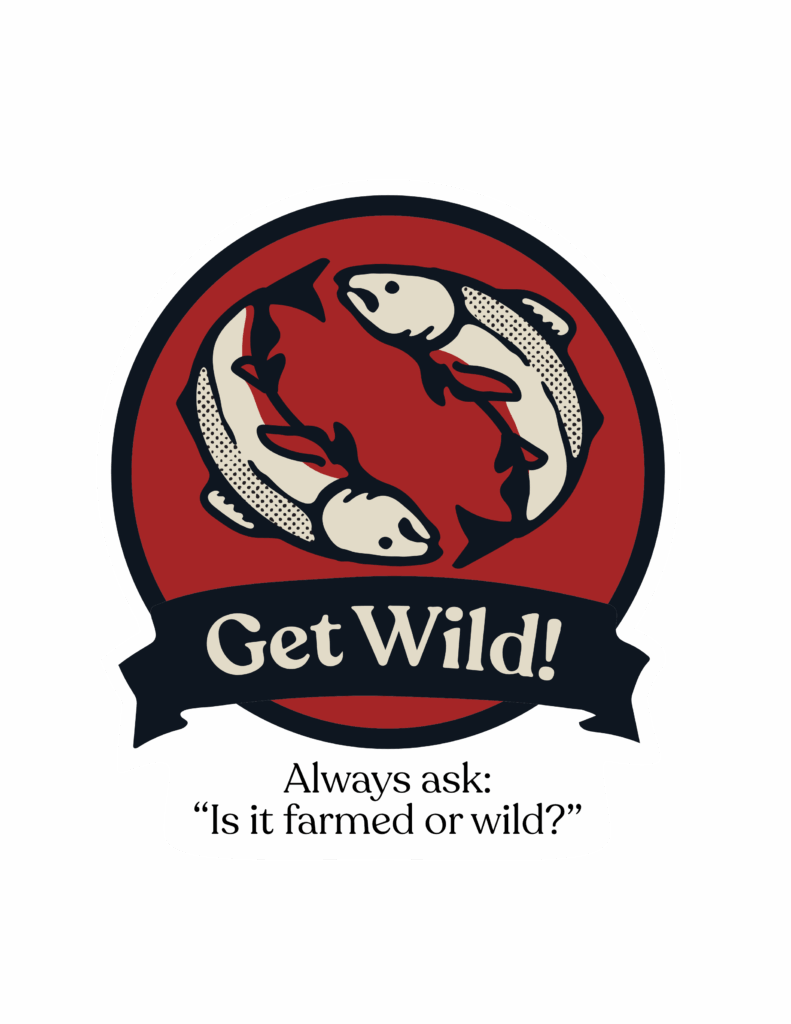
WHAT IS GET WILD?
Always ask: wild or farmed?
Get Wild! is an educational program with the goal of protecting wild salmon, by encouraging people to ask for and purchase only wild, not farmed salmon. Even here in Tofino, you will find farmed salmon sold and served—buyer beware! It is often misleadingly labelled “Local”, even though the companies are foreign-owned and the supplies including feed come from all over the globe.
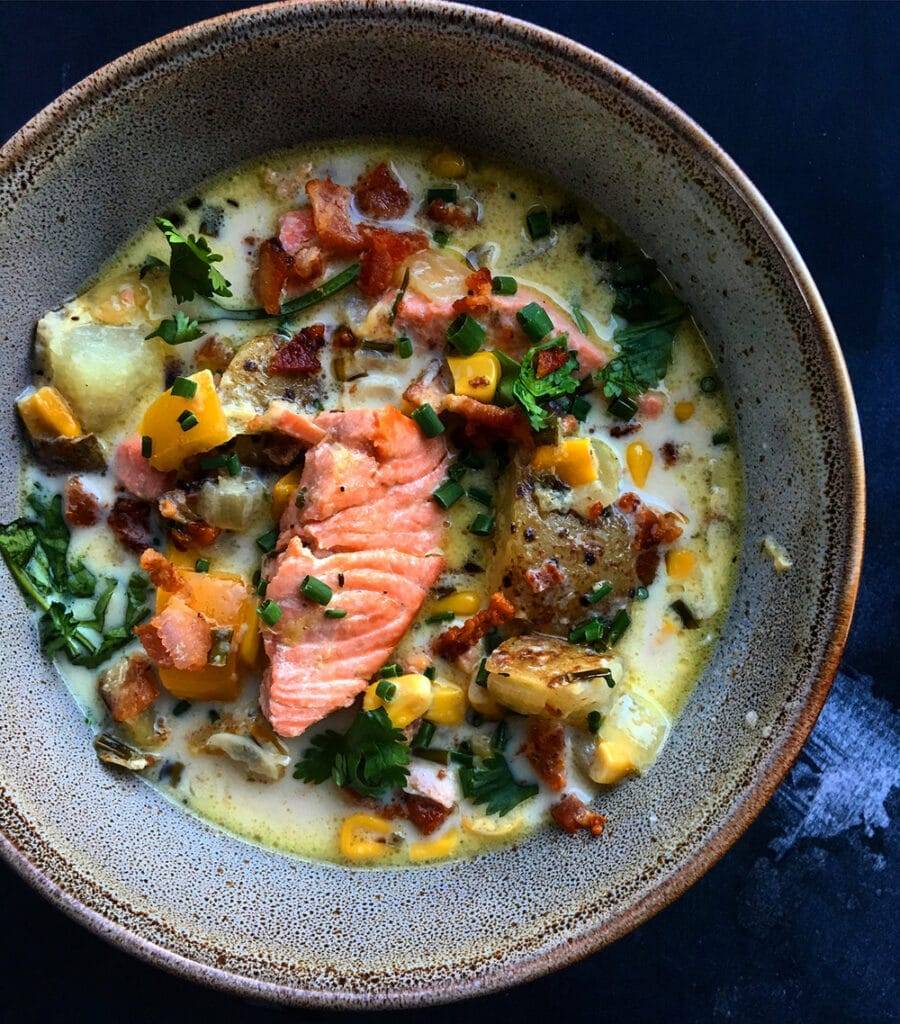
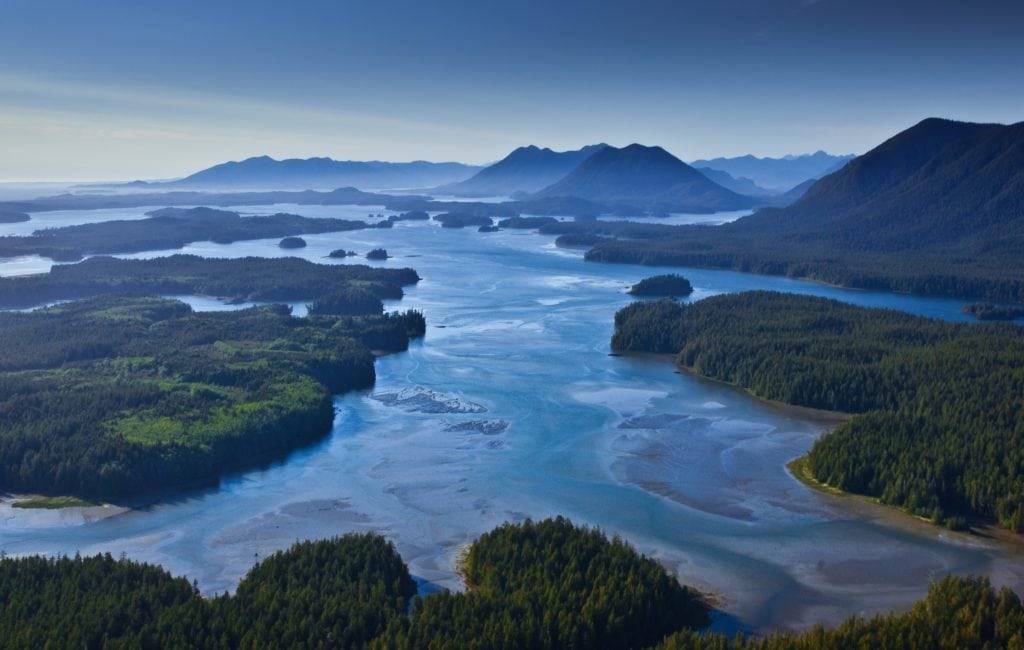
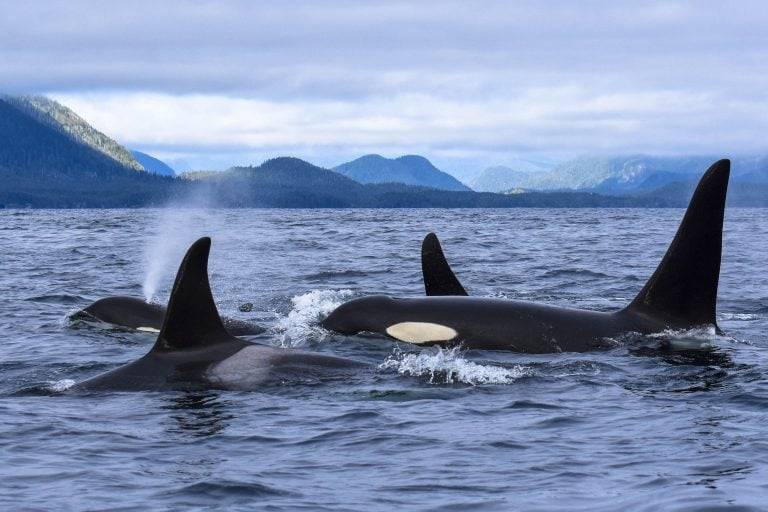
The ecologically responsible choice
Why Get Wild?
Wild salmon is a cherished food here in Clayoquot Sound, and throughout coastal BC. Locals take pride in wild salmon, and celebrate the seasonal bounty and healthy source of protein that salmon bring. With such an interconnectedness between people and salmon comes the recognition that this beautiful species must be protected. By choosing to Get Wild! rather than purchasing farmed salmon, you are making the ecologically responsible choice for this beautiful wild coast.
Salmon is seasonal
Bear in mind...
No doubt you may want to enjoy seafood while you’re in Tofino! But please remember, wild salmon is a seasonal food to be celebrated and savoured with respect. Sometimes, wild salmon may not be included on the menu or shelves at local businesses. In this case, your server or vendor can recommend other seasonal seafood for you to enjoy.
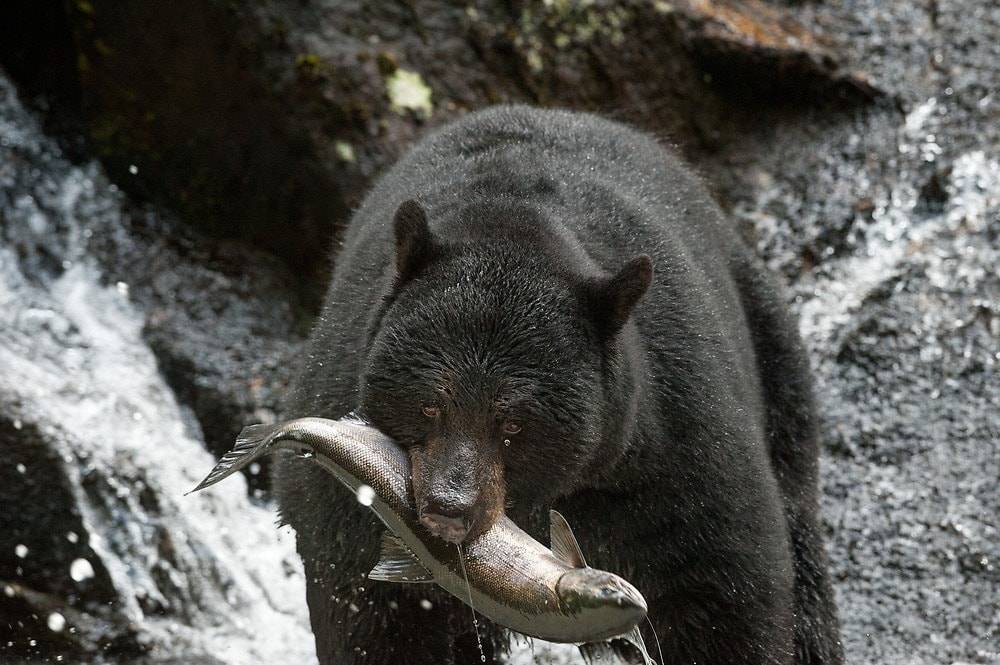
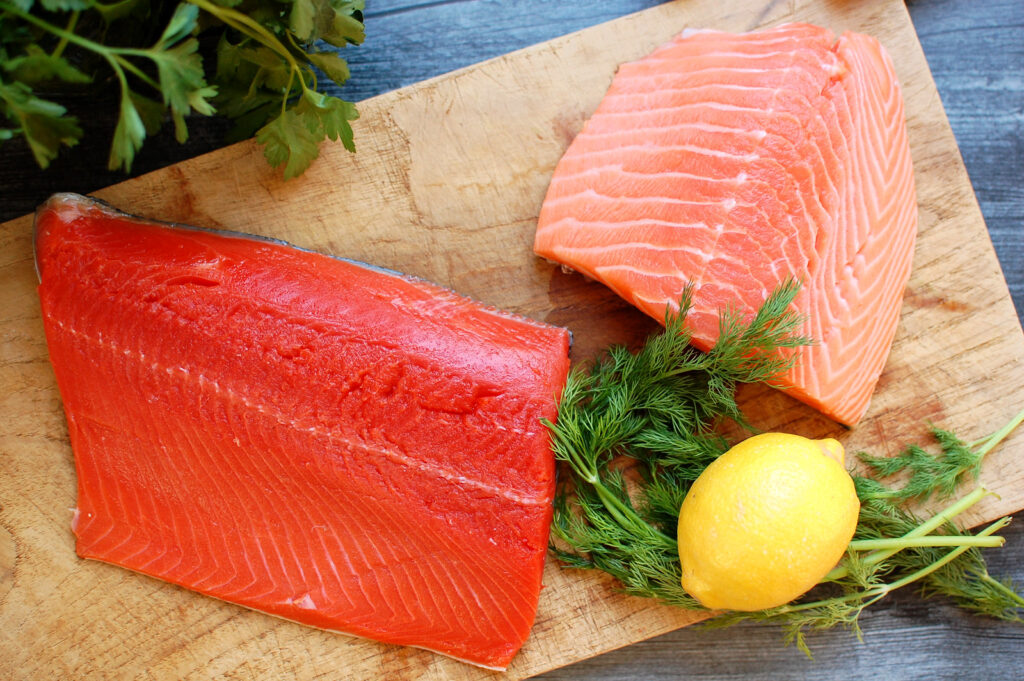
Is farmed salmon actually safe to eat?
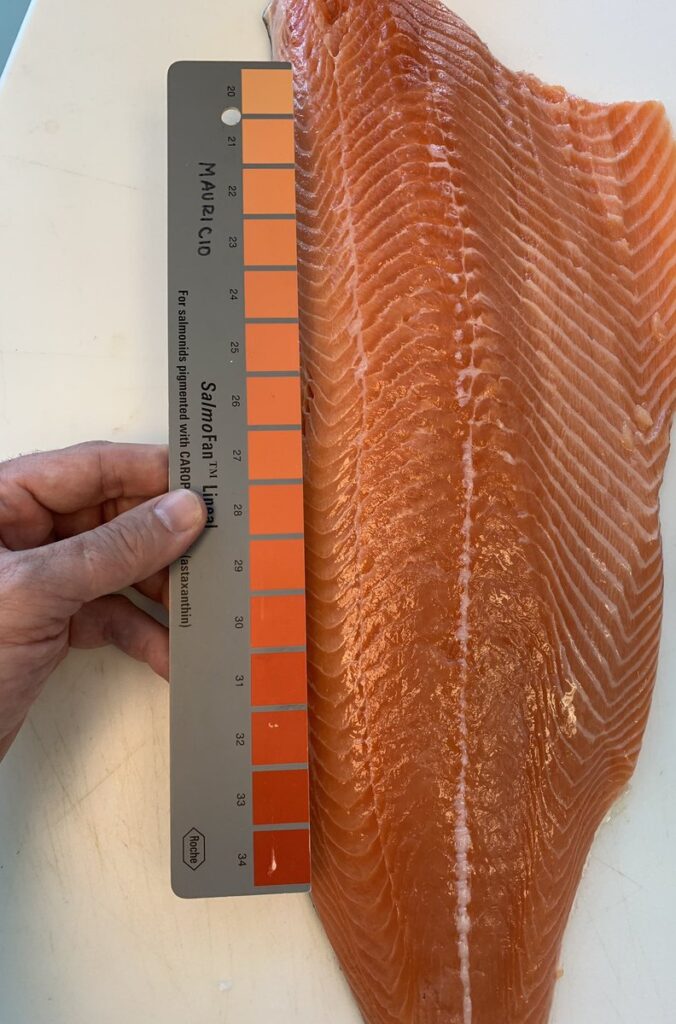
How to do you tell?
Colour
One of the easiest ways to differentiate between farmed and wild salmon is the colour. Wild salmon have a vibrant and natural colour that ranges from pink to deep red. This is due to their natural diet, which includes krill and other small marine organisms that contain pigments called carotenoids. Farmed salmon, on the other hand, usually have a pale pink or orange colour. This is because they are fed a diet that includes artificial pigments. These dyes are expensive, so companies are stingy with it, in order to keep costs down.
Fat Content
You can see the fat in farmed salmon. Wild salmon generally have lower fat content due to their active lifestyle and natural diet. This results in leaner fillets with less marbling. Farmed salmon, on the other hand, tend to have a higher fat content. This is because they are often fed a diet that is higher in fat to promote rapid growth.
Texture
Wild salmon tends to have a firmer texture due to its active lifestyle in the open ocean. The muscle development in these fish gives them a leaner and more robust texture. Farmed salmon, on the other hand, may have a softer texture due to their sedentary lifestyle. This lack of exercise can result in less muscle development and a softer flesh.
Price
In general, farmed salmon is cheaper. This is because farmed salmon can be produced in larger quantities and with less effort, resulting in a lower production cost. Wild salmon, on the other hand, is more expensive due to its limited availability and the costs associated with catching fish in their natural habitat.
Labeling
If the label states that the salmon is “wild-caught” it is likely to be wild salmon. On the other hand, if the label states that it is “farm-raised” or “aquaculture,” it indicates that the salmon was raised in captivity. Watch out for the term “Local” or “Product of BC”, especially when purchasing Pacific Chinook, especially in Tofino, where Chinook salmon are reared in polluting open-net pens. Atlantic salmon are obviously not caught in the Pacific; nor are they commercially caught anywhere. If it’s labelled Atlantic—it’s farmed salmon.
Frequently Asked Questions
One might think that farming salmon gives their wild relatives a break. However, farmed salmon (being carnivores), are fed wild forage fish—resulting in a net loss of protein and adding to ocean species depletion.
The mission of Get Wild! is not to encourage endless consumption of precious wild salmon. Rather, this program aims to open up the dialogue around the challenges posed to wild salmon by open-net pen salmon farming.
Another key goal of the program is to address the lack of education and awareness surrounding seasonality and availability of the five species of Pacific salmon.
Open-net pen salmon farms pollute the ocean, spreading deadly disease and parasites to Clayoquot Sound’s endangered wild salmon.
